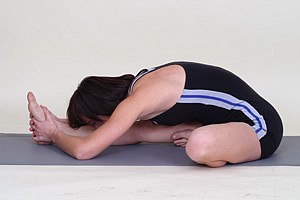Vata Dosha Characteristics
OK, we’ve already mentioned before, that every person has a particular ratio of three doshas, which is given to them at conception – this is called Prakriti or the primordial nature. When your doshas are in perfect balance you live according to your Prakriti, which means you are healthy and happy.
Since there are many factors that influence us during our life, there is another term – Vikriti – which describes the current ratio of doshas, and may indicate that the doshas are out of balance (which actually often are). Vikriti does not necessarily mean the imbalance of doshas, but it may so, because the majority of people have their doshas imbalanced due to various influences. Modern people often have their Vikriti being significantly different from their original Prakriti. The more such difference is the more diseases one has. The Ayurvedic way to cure a person is to bring their Vikriti to almost the same dosha ratio as their Prakriti. Among many ways to do so there is a dosha balancing diet, a proper type of routines, and physical activities. And today we are going to talk about balancing vata dosha through yoga.
Vata Dosha and Exercise
 Why yoga? Well, of course it should not necessarily be yoga; you can do whatever activity you want, but since I have got some experience in yoga practice, I will do it from the yogic point of view (also it is often said that yoga and Ayurveda are just like sisters).
Why yoga? Well, of course it should not necessarily be yoga; you can do whatever activity you want, but since I have got some experience in yoga practice, I will do it from the yogic point of view (also it is often said that yoga and Ayurveda are just like sisters).
The specifics of yoga practice and any other exercise for Vata people are dictated by the Vata characteristics. A Vata body is usually thin, with not so strong muscles, dry and thin skin, bad blood circulation, and a small amount of fat.
A Vata person is prone to mood swings, emotionally sensitive, creative and very active. When practicing yoga such people tend to do yoga poses in a dynamic way, and they may get involved in an excessive asana performance.
The yoga routine for Vata-dosha should be slow, with the holding of yoga postures for long time; the focus should be placed on balancing poses and poses to develop strength. A Vata person should do asanas slowly and with full awareness, trying to achieve the longest time for holding a pose rather than reaching the highest amplitude in performing asanas. The signs of a good Vata yoga practice are:
- The development of body’s stability
- The muscle and joint strengthening
- The increase in overall balance
- The emotional stability
The signs of incorrect practice are:
- Pain
- Muscle strain
- Injuries
- Digestion disorder
- Insomnia
- Constipation
Besides yoga postures, the energy practices of yoga are also beneficial for Vata . They include pranayama, meditation and the chanting of mantras.
Please, remember that the key to successful yoga practice to balance your dosha (Vata) is being regular – this is the “oil” that lubricates the creaky Vata wheel. Do your yoga regularly (better daily), and you will enjoy your life with the balanced Vata-dosha.
If static poses cause you feeling uncomfortable, do poses in slow motions along with proper breathing. But still you should try holding the asanas as long as you can since it grounds Vata.
Vata Dosha Yoga Poses
Now I want to give you a simple yoga routine for daily practice; I’m not going to mention all the details, only the poses names (their description can be found either on this website or on the Internet).
Yoga routine for vata dosha: Tadasana, Vriksasana (vrksasana), Utthita Trikonasana, Utthita Parsvakonasana, Virabhadrasana 1, 3, Parsvottanasana, Sarvangasana, Halasana, Matsyasana, Janu Sirsasana, Supta Virasana, Paschimottanasana, Ardha Matsyendrasana, Bhujangasana, Salabhasana 2, Alligator Pose, Shavasana.
Doing this sequence regularly will help you balancing vata dosha through yoga.

For how long shall we hold and do each pose and totsl duration of entire sequence daily to balance vata dosha?
Hello!
Well, there are particular recommendations for each pose on how long it should be performed. I didn’t mention them here since it would require the description of techniques for each pose (but I might do it in the future). The general rule for Vata dosha is to do the yoga poses slowly and hold them longer – it grounds the dosha. Another point to mention is that the single session or a sequence or a class shouldn’t be too long for Vata, otherwise the Vata person will experience the loss of energy. I would say try not to go over an hour for your single session/practice.